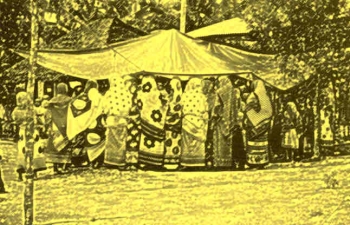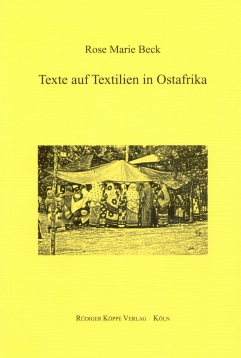



This study is concerned with the use of the wrap-around cloth leso in the female culture of the islamic, Swahili-speaking societies on the coasts of East Africa. Using communication science as its focus, the author argues that the cloth allows Swahili women to simultaneously conform to societal expectations and express their independence. Since its introduction in Zanzibar in the second half of the 19th century, the leso (or kanga) has spread along the coasts and into mainland East Africa. Today it is part of everyday female garments. The peculiarity of these pieces of clothing are the texts printed on the cloth: short proverbial inscriptions, declaring the woman’s statement on topics that they are socially forbidden to speak of in public, including love and sexuality, quarrels, jealousy and envy, but also advice and admonitions to another person.
The communicative use of these pieces of cloth is poised between the forbidden topics and socially conforming behaviour, its aim to express one’s intention without becoming liable to prosecution. The result is a form of communication steeped in ambiguity. The author has been working on Swahili society for many years, and she collected the specific basis for this study during several field studies in the mid 1990s. Extending from the study of proverb usage and the ‘anthropology of speaking’, an integrated model is presented for the analysis of the leso and its use in communication. Wearing a leso is defined as a communicative act subject to culturally defined ideals of communication, where the proverbial statement contingent to the leso and its use in specific contexts provide a bundle of properties that are exploited to achieve ambiguity. Selected examples are provided to substantiate the range of possible variables. The analysis is then broadened into various other scientific contexts, i.e. pragmatics, textual analysis and ambiguity research.
The final chapter addresses the question of how the wearing of leso and its implicit messages are regarded in the context of societal ideals of communication. Clearly negative views dominate, where the leso are seen as statements of the marginalized and too close for comfort to insult and slander. Nevertheless, the author argues, it allows women to express their views without being forced to explicitly break these ideals.
Under these links you will find publications by the author and further studies of the production and use of fabrics and textiles in Africa:
© 2026 by Rüdiger Köppe Verlag – www.koeppe.de